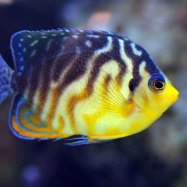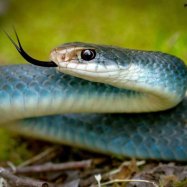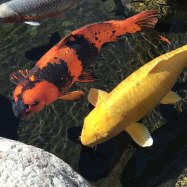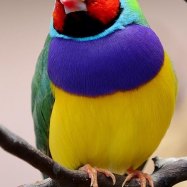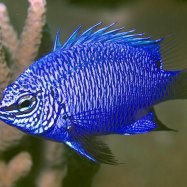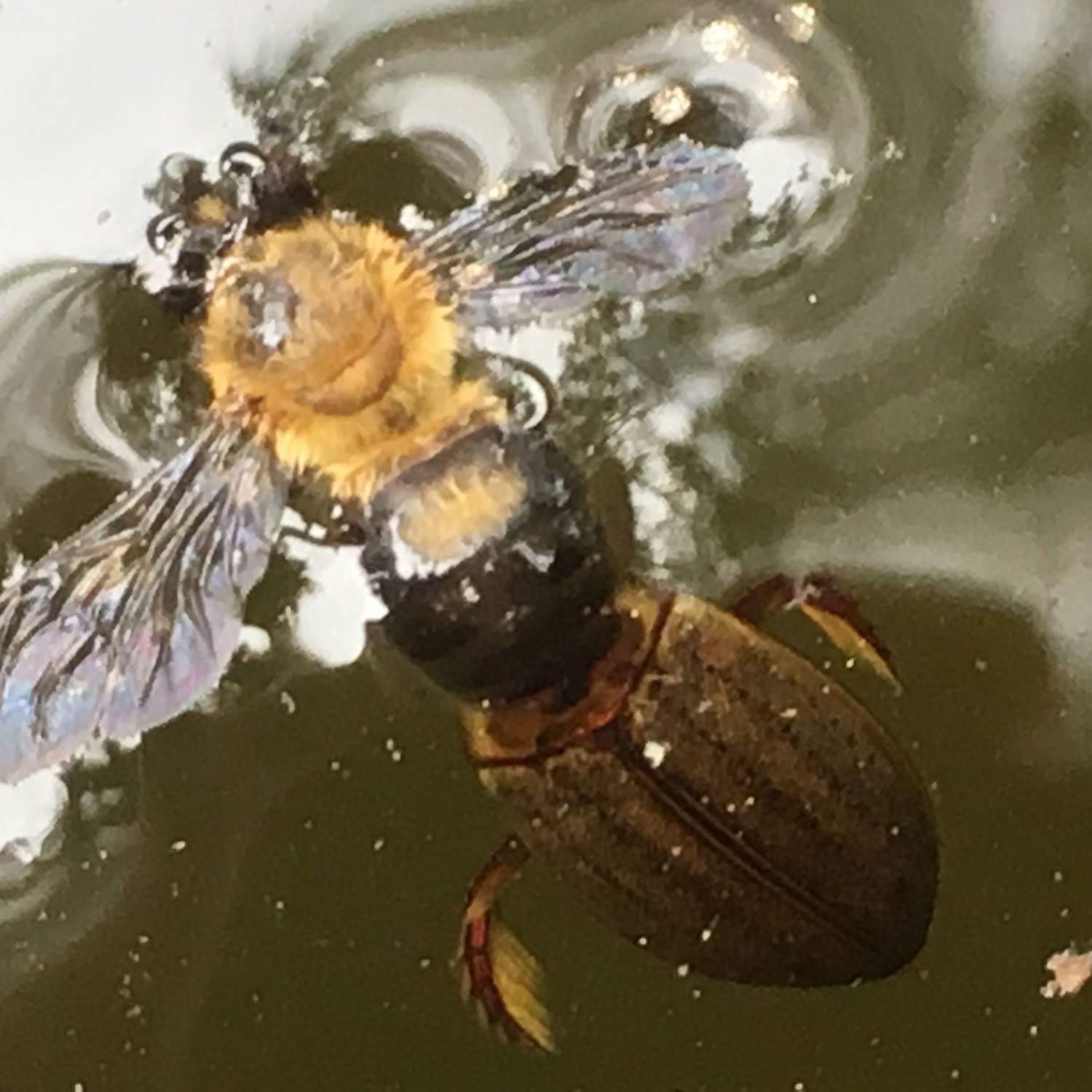
Water Beetle
1-10 mm
Water beetles, belonging to the family Haliplidae, are small and oval-shaped with a length ranging from 1-10 mm. They are commonly found in bodies of water like ponds, lakes, and rivers. These tiny creatures are essential for maintaining the balance of aquatic ecosystems and serve as indicators of water quality. Keep an eye out for these impressive little insects the next time you're near a body of water!
Animal Details Summary:
Common Name: Water Beetle
Kingdom: Animalia
Habitat: Freshwater habitats such as lakes, ponds, rivers, and streams
The Fascinating World of Water Beetles
When you think of aquatic creatures, the first things that come to mind may be fish, dolphins, or sharks. But did you know that there is an entire world of tiny and intriguing creatures that live in the watery depths? We are talking about one of the most unique and diverse species of insects - the water beetle.Scientifically known as Haliplus and commonly referred to as the Water Beetle, this small but mighty insect is part of the Animalia kingdom, belonging to the phylum Arthropoda and the class Insecta. In this article, we will take a deep dive into the lesser-known but fascinating world of water beetles Water Beetle.
Appearance and Habitat
Water beetles are known for their distinct dark brown to black coloration, making them appear almost invisible against the dark water. They have an oval-shaped body, which is flattened and streamlined to help them move through water with ease. The body length of water beetles ranges from 1-10 mm, with some species reaching up to 30 mm.As their name suggests, water beetles are excellent swimmers and are able to live and thrive in freshwater environments such as lakes, ponds, rivers, and streams. They can also be found in brackish water, which is a mix of both fresh and saltwater. The Haliplidae family, which water beetles belong to, has more than 200 known species worldwide, making them a widespread and diverse group of insects.
Country of origin and exact location of water beetles varies depending on the species, but they can be found across all continents except Antarctica. While some species prefer stagnant water, others thrive in fast-moving rivers and streams. Due to their small size and excellent adaptation skills, water beetles can live in a wide range of habitats and environments Wryneck.
Feeding Habits
Water beetles are predators and play an essential role in their ecosystem by controlling the population of smaller aquatic insects. They have a diverse diet and will eat anything from insect larvae, crustaceans, and small fish, making them an essential link in the aquatic food chain.Some water beetles have adapted to become ambush predators, waiting patiently for their prey to come near, while others actively hunt by swimming and chasing their prey. They have powerful mandibles that they use to catch and consume their food. Some species even have the ability to release a sticky substance to trap their prey, and then use their mandibles to crush and devour them.
Adaptations for survival
As with any species, water beetles have evolved and developed various adaptations to survive and thrive in their unique aquatic environment. Their oval-shaped body and flattened profile allow them to glide smoothly through the water, and their back legs are flattened into oars to aid in swimming.One of the most impressive adaptations of water beetles is their ability to breathe underwater. They have a specialized structure called tracheal gills that resemble feathery plumes. These gills are located on the underside of their abdomen and act as an oxygen exchange system, allowing them to breathe while submerged in water. This adaptation is essential for their survival, especially in stagnant water where oxygen levels may be low.
Behavior and Reproduction
Water beetles are solitary creatures and prefer to live alone rather than in swarms or groups. However, they do gather in large numbers during mating season, which typically occurs in late spring or early summer. During this time, the males will perform elaborate courtship rituals to attract females.Fertilization in water beetles can happen in two ways – internal or external. Some species have a unique mating behavior where the male traps a bubble of air under the female's wings while mating. This air bubble acts as a diving bell, allowing the female to remain submerged while laying her eggs. In other species, the female lays her eggs on a leaf or underwater plant, and the male will then fertilize them externally.
The eggs of water beetles will hatch into larvae, which are aquatic and go through several stages of development before reaching adulthood. The larvae look and behave quite differently from the adults and are also predatory. They have a segmented body with well-developed legs, and they use their powerful mandibles to catch and consume their prey. The duration of the larval stage can vary depending on the species, but it typically takes a few weeks to a few months.
Importance in the ecosystem
Despite their small size, water beetles play a significant role in their aquatic ecosystems. As predators, they help control the population of smaller aquatic insects, preventing them from overpopulating and disrupting the balance of their environment. This makes them an essential link in the food chain.Moreover, water beetles also serve as bioindicators, meaning their presence or absence in a particular habitat can provide insight into the overall health of that ecosystem. Changes in the number or diversity of water beetles can indicate pollution or habitat degradation, making them critical indicators for environmental health and conservation efforts.
Threats and Conservation
Like many other species, water beetles are facing various threats to their survival. Habitat destruction and pollution are some of the biggest risks for these insects. Human activities such as farming, urban development, and pollution from industries and agriculture have a significant impact on their freshwater habitats, making it difficult for water beetles to survive and reproduce.Climate change also poses a severe threat to water beetles, as rising temperatures can alter the water temperature, oxygen levels, and nutrient availability in their habitats, affecting their survival and reproductive cycles. The loss of freshwater habitats and the introduction of non-native species are also significant threats to the survival of water beetles.
To protect these essential aquatic insects, conservation efforts must be put in place to preserve their habitats and reduce pollution. This requires active involvement from governments, industries, and individuals to work towards sustainable development and responsible use of our freshwater resources. Furthermore, efforts must also be made to raise awareness about the importance of water beetles and their role in maintaining the balance of aquatic ecosystems.
Final Thoughts
In conclusion, water beetles may not be as well-known as other aquatic creatures, but they are no less fascinating. With their unique adaptations for survival, diverse behaviors, and critical role in their ecosystems, water beetles are truly remarkable insects.As we continue to learn more about these tiny but mighty creatures, it is vital to remember the impact of our actions on their survival. Through responsible use of our freshwater resources, conservation efforts, and raising awareness, we can help protect these essential insects and ensure their presence for generations to come.
So next time you're near a lake, pond, or stream, take a moment to appreciate the unique world of water beetles that thrives beneath the surface. Who knows, you may even catch a glimpse of these dark and mysterious creatures swimming effortlessly through the water.

Water Beetle
Animal Details Water Beetle - Scientific Name: Haliplus
- Category: Animals W
- Scientific Name: Haliplus
- Common Name: Water Beetle
- Kingdom: Animalia
- Phylum: Arthropoda
- Class: Insecta
- Order: Coleoptera
- Family: Haliplidae
- Habitat: Freshwater habitats such as lakes, ponds, rivers, and streams
- Feeding Method: Predatory
- Geographical Distribution: Worldwide
- Country of Origin:
- Location:
- Animal Coloration: Dark brown to black
- Body Shape: Oval-shaped
- Length: 1-10 mm
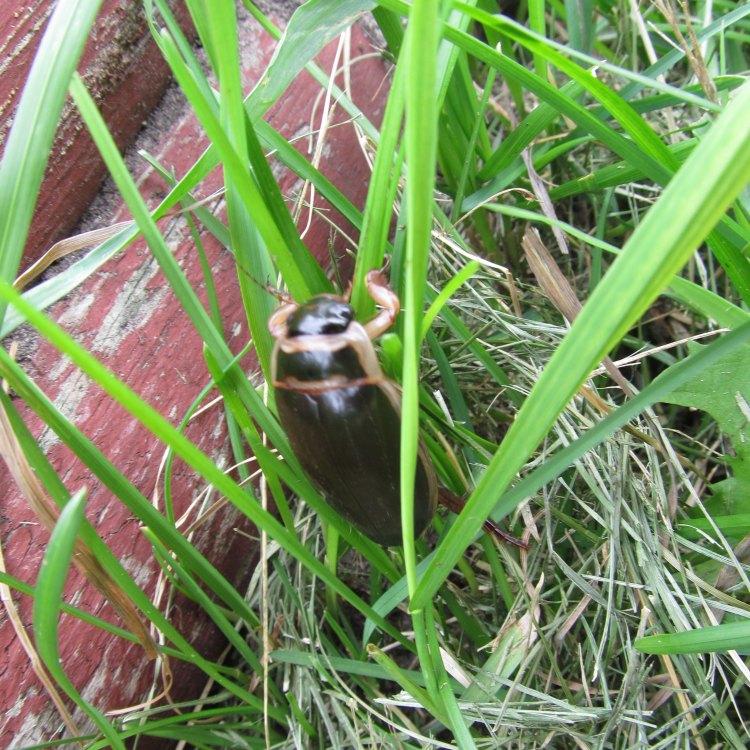
Water Beetle
- Adult Size:
- Average Lifespan: 1-2 years
- Reproduction: Sexual
- Reproductive Behavior:
- Sound or Call:
- Migration Pattern:
- Social Groups: Solitary
- Behavior:
- Threats: Water pollution, habitat destruction
- Conservation Status: Not evaluated
- Impact on Ecosystem: As predators, they help control populations of smaller aquatic organisms
- Human Use: Not significantly used by humans
- Distinctive Features: Flattened body, oar-like hind legs for swimming
- Interesting Facts: Water beetles have specialized hairs on their bodies that capture air bubbles, allowing them to breathe underwater.
- Predator:
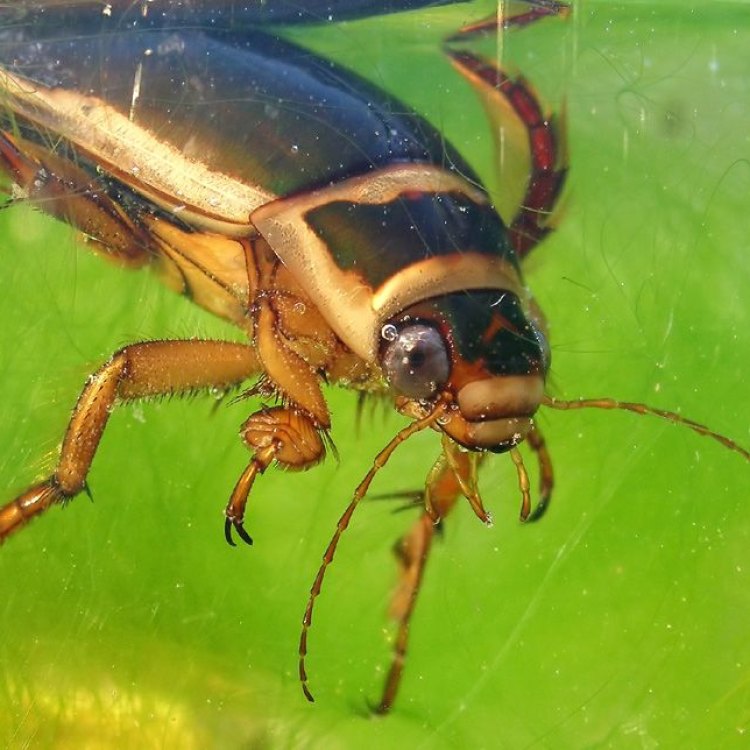
Haliplus
The Fascinating Life of the Water Beetle: A Tiny but Mighty Predator
When we think of beetles, we often picture small, crawling insects that we occasionally see in our gardens or homes. However, there is a unique species of beetle that lives both on land and in water, known as the water beetle. Don't let its small size deceive you; these insects are fascinating creatures with various unique features and behaviors. In this article, we will delve into the world of water beetles, exploring their physical attributes, behavior, and impact on ecosystems PeaceOfAnimals.Com.The Basics: Adult Size, Average Lifespan, and Reproduction
Water beetles belong to the order Coleoptera, which is the largest order of insects, consisting of around 400,000 species. Adult water beetles are typically small, measuring between 0.08 to 1.57 inches in length. While some species may be brightly colored, most water beetles have a dark brown or black body, which makes them hard to spot in their aquatic habitat.On average, water beetles have a lifespan of 1-2 years. However, the exact lifespan varies depending on the species and their environment.
Like most insects, water beetles reproduce sexually. The males and females will mate, and the female will lay eggs, which she may attach to submerged plants or leave floating on the water's surface Water Vole. Some species also lay clusters of eggs on the underside of their abdomen. After hatching, the larvae swim and feed on small aquatic organisms before emerging as adults.
Reproductive Behavior and Social Groups
The reproductive behavior of water beetles varies depending on the species. Some species, such as the diving beetle, use a unique method known as "subglacial copulation." During this process, the male and female dive under the water's surface and attach themselves to a plant. The male then curls his body around the female, and they mate while submerged.Water beetles are generally solitary creatures, meaning they prefer to live alone. However, some species may gather in large numbers during mating season or when resources are scarce. They may also form small social groups when competing for food or suitable habitats.
Sound or Call and Migration Pattern
Unlike many other insects, water beetles do not produce a sound or call. As water-dwelling creatures, they use vibrations in the water to communicate with one another.Water beetles do not migrate in the traditional sense of moving to a different location seasonally. However, some species may disperse from heavily populated areas during breeding season to find suitable habitats for laying their eggs.
Behavior and Threats
Water beetles have adapted to life in the water in many ways, making them efficient and impressive predators. First, they have a flattened, streamlined body that allows them to swim with ease and speed. Additionally, they have oar-like hind legs that help them navigate through the water and catch prey.As predators, water beetles play a vital role in regulating the population of smaller aquatic organisms, such as mosquito larvae, snails, and other insects. This helps to maintain a balance in the ecosystem and prevent overpopulation of certain species.
However, like many other aquatic organisms, water beetles are facing threats to their survival. The most significant threat is water pollution, which can disrupt their breeding patterns, damage their sensitive respiratory systems, and reduce their food sources. Habitat destruction, such as the draining of wetlands, also poses a threat to water beetles. These threats can not only harm the water beetles but also have a ripple effect on the entire aquatic ecosystem they inhabit.
Conservation Status and Impact on the Ecosystem
The conservation status of water beetles is not yet evaluated, as not enough research has been conducted on their population and threats. However, their importance in regulating populations of other aquatic organisms makes them crucial to the overall health and balance of the ecosystems they inhabit.As mentioned earlier, water beetles play a significant role in controlling populations of smaller aquatic organisms. This, in turn, has a cascading effect on the food chain, ensuring that certain species do not overrun their resources and cause damage to the ecosystem.
Therefore, the decline in water beetle populations can have a severe impact on the ecosystem, leading to imbalances and potentially harmful consequences. It is essential to promote the conservation of water beetles and their habitats to maintain a healthy and thriving ecosystem.
Human Use and Distinctive Features
Water beetles are not significantly used by humans, as they do not have any known medicinal or commercial value. However, they are popular among insect collectors, and some species are sought after for use in aquariums.What sets water beetles apart from other insects is their unique features that allow them to thrive in the water. As mentioned earlier, their streamlined body and oar-like hind legs are perfect for swimming. But that's not all; water beetles also have specialized hairs on their bodies that help them capture air bubbles. These air bubbles act as a sort of "diving bell," allowing the beetle to stay underwater for longer periods and breathe freely.
Interesting Facts
Water beetles may be small and seemingly insignificant, but there are many interesting facts about them that may surprise you. For starters, some species of water beetles are bioluminescent, meaning they can produce light and emit it from their bodies. This unique adaptation is used for communication and mating.Additionally, water beetles are excellent flyers and can travel up to 12 miles from their water source, which is impressive for such small creatures. They are also known as some of the oldest insects, with fossils dating back over 200 million years. These ancient creatures have withstood the test of time and continue to thrive in both water and land environments.
Predators
Even though water beetles may seem like powerful predators, they, too, have predators. Birds, fish, and other aquatic insects such as dragonflies and water scorpions are some of the water beetles' main predators.In Conclusion
In conclusion, water beetles may appear to be tiny, insignificant insects, but they are essential members of the aquatic ecosystem. With their unique features, behaviors, and roles as predators, they have adapted to life in the water in fascinating ways. However, like many other species, water beetles face threats to their survival, making conservation efforts crucial to their existence. So, the next time you come across a water beetle in a pond or stream, take a moment to appreciate the wonders of this tiny but mighty predator.
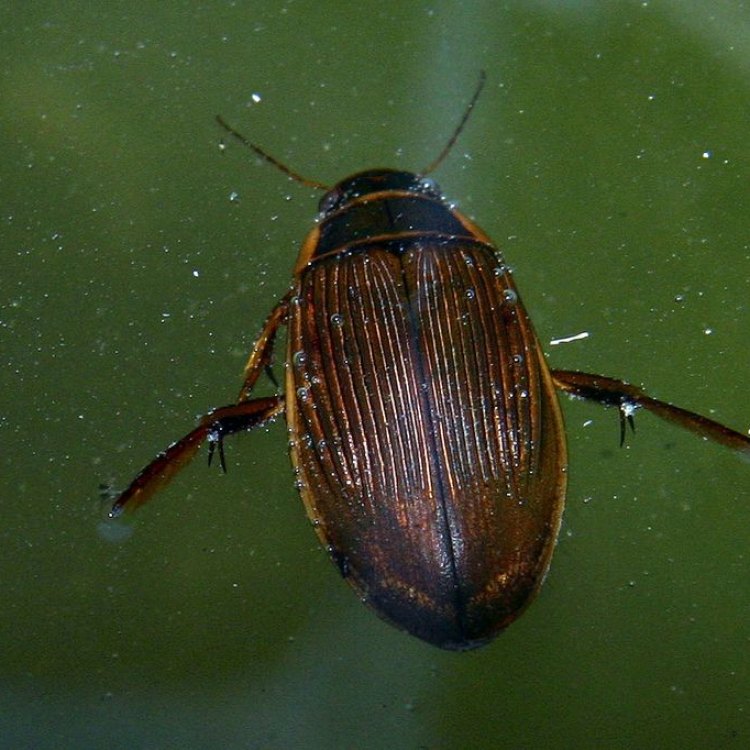
The Fascinating World of Water Beetles
Disclaimer: The content provided is for informational purposes only. We cannot guarantee the accuracy of the information on this page 100%. All information provided here may change without prior notice.

